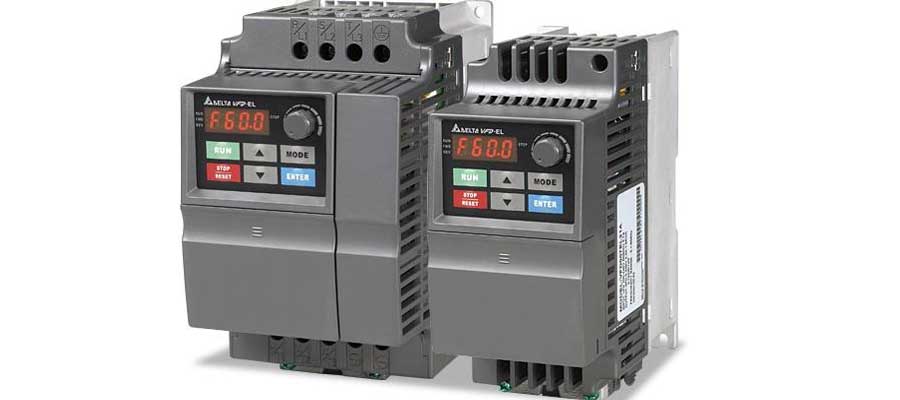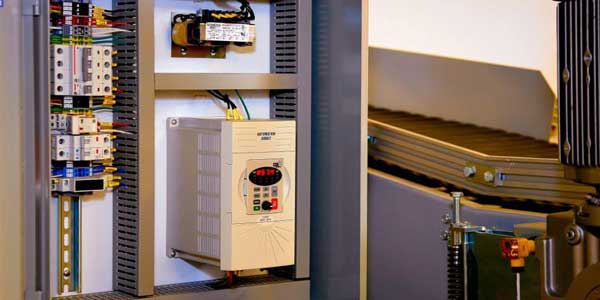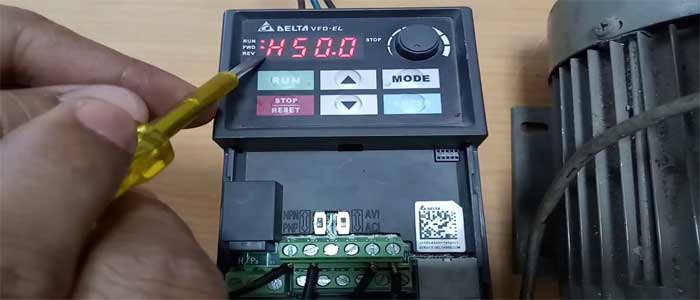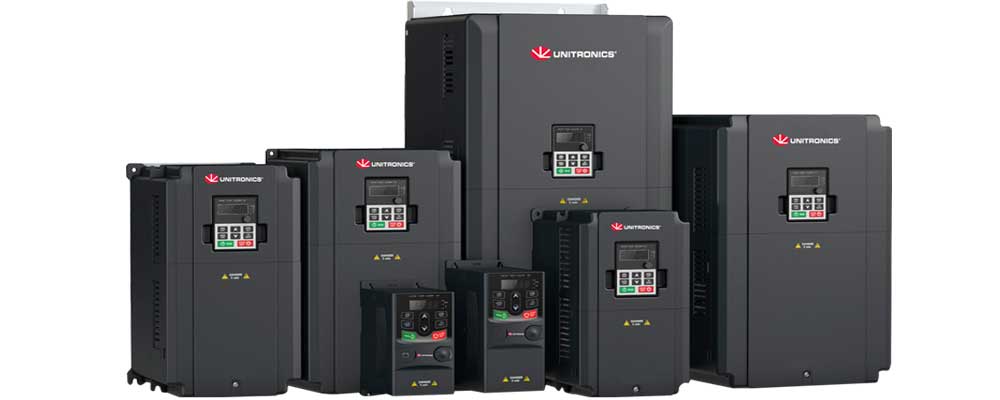Industrial Applications of VFD (Variable Frequency Drive)
Variable Frequency Drives (VFDs) revolutionize the industry by controlling motor speed and improving energy efficiency. In this blog, we explore industrial applications of VFDs, including HVAC and manufacturing processes.
We discuss energy savings, working principles, and control methods. We provide insights on selection, implementation, and maintenance. Join us to uncover the role of VFDs in optimizing industrial operations and driving sustainability.
Introduction to Variable Frequency Drives (VFD)
Definition and Purpose of VFDs
A Variable Frequency Drive (VFD) is an electronic device that controls electric motor speed. It adjusts the frequency and voltage supplied to the motor, enabling precision control. VFDs are instrumental in numerous industrial applications as they provide several benefits. They not only facilitate process automation but also enhance energy efficiency.
Advantages of Using VFDs in Industrial Applications
VFDs bring several advantages in industrial settings. They improve energy efficiency, as they only use the energy required for the process. This leads to substantial energy savings. Additionally, VFDs allow precise control of motor speed, enabling optimal performance and reducing mechanical stress on the system. Also, the ability to softly start and stop motors helps increase their life span. These benefits make VFDs a highly valuable component in the industrial sector.
Importance of VFDs in industries
The importance of Variable Frequency Drives (VFDs) in various industries cannot be overstated. From manufacturing to HVAC, VFDs have transformed how businesses manage their motor-driven processes.
Energy Efficiency: One of the key benefits of using VFDs is energy efficiency. Traditional motor systems operate at constant speeds, regardless of the actual requirements of the operation. VFDs, on the other hand, allow for the precise control of motor speed, meaning energy is only consumed when and as needed. This leads to significant energy and cost savings.
Improved Process Control: VFDs allow for exact speed and torque control, which is vital for many industrial processes. They enable motors to start and stop gradually, reducing mechanical stress and extending equipment lifespan. Moreover, they allow for the fine-tuning of processes, leading to higher product quality and fewer production errors.
Enhanced System Protection: VFDs provide built-in motor protection features. They monitor system parameters like voltage, current, and temperature, and can alert operators to any issues, preventing damage and extending equipment life.
Reduced Operating Costs: The energy savings from using VFDs translate into lower operating costs. In addition, their ability to extend equipment life means less frequent replacement costs and lower maintenance costs due to fewer mechanical failures.
Increased Production Output: With precise control over equipment, industries can optimize their processes for maximum productivity. This can lead to an increase in production output, directly impacting the bottom line.
Versatility: VFDs are versatile, finding use in a wide array of applications, from pumping systems and HVAC systems to conveyors and mixers. This broad applicability makes them invaluable in nearly any industry that uses motor-driven equipment.
Understanding the Working of a VFD
Explanation of VFD Components and Their Functions
A Variable Frequency Drive (VFD) consists of three main components: the converter, the DC link, and the inverter. The converter is the first stage of a VFD. It comprises six diodes, which function like check valves used in plumbing systems. They allow current to flow in only one direction; the direction shown by the arrow in the diode symbol. The diodes convert AC power from the mains into DC power.
The DC link acts as a buffer between the converter and the inverter. It smooths out the converted DC power, removing any pulsed characteristics from the rectification process in the converter stage. It also stores this power, ensuring a stable, controlled output.
The final component is the inverter. Using a series of switches, the inverter takes the smoothed DC power from the DC link and inverts it back into AC power. The frequency of this AC power is then controlled to drive the connected motor at the desired speed.
Discussion on How a VFD Controls Motor Speed
The motor speed control function of a VFD is its most critical feature. The principle is simple: the speed of an AC motor is directly proportional to the frequency of the AC power it receives. By adjusting the frequency of the power supplied to the motor, the VFD can control its speed.
When a VFD starts, it initially supplies a low frequency and voltage to the motor. The frequency is gradually increased to ramp up the speed of the motor. This method of starting avoids the high inrush current that occurs when an AC motor is started directly across the line (or ‘direct-on-line’).
By adjusting the frequency and voltage to match the motor load, the VFD allows the motor to run only as fast as needed. This results in significant energy savings and allows for precise control of the motor speed. Whether for a pump, a fan, or a conveyor belt, the ability to precisely control speed brings many advantages to industrial processes.
Benefits of Using VFDs in Industries
Energy Efficiency
Variable Frequency Drives (VFDs) significantly enhance energy efficiency in industrial applications. They adjust motor speed to match demand, reducing unnecessary energy consumption. This leads to substantial energy savings and decreases overall operating costs.
Improved Process Control
VFDs provide precise control over motor speed, leading to improved process control. This precision helps industries optimize their operations, ensuring smooth functioning and reducing the likelihood of errors and wastage, thereby boosting productivity and efficiency.
Increased Equipment Lifespan
By controlling the start and stop cycles of motors, VFDs reduce the mechanical stress on the equipment. This gentle handling extends the equipment’s lifespan, reducing the need for frequent replacements or repairs, ultimately saving time and money in maintenance costs.
Specific Industrial Applications of VFDs
VFDs in Pumping Systems
In pumping systems, Variable Frequency Drives (VFDs) have revolutionized operations. They offer precise control over pump speed, optimizing efficiency and conserving energy in various industries.
Role of VFDs in Controlling Pump Speed
VFDs play a pivotal role in controlling pump speed. They match the pump’s output with the system demand, eliminating the need for wasteful throttling methods. This precise control leads to smoother operations and less strain on the pump.
Energy Saving and Process Efficiency in Pumping Systems
Through careful speed control, VFDs greatly enhance energy saving and process efficiency in pumping systems. By adjusting pump speed to match demand, VFDs minimize energy consumption and reduce wear and tear on the pump, significantly improving overall system efficiency.
VFDs in HVAC Systems
Importance of VFDs in Controlling Fan and Compressor Speeds
In HVAC systems, Variable Frequency Drives (VFDs) have a critical role in controlling fan and compressor speeds. They regulate these speeds based on system demand, providing precise temperature control and enhancing indoor comfort levels.
Energy Saving Benefits in HVAC Applications
VFDs offer substantial energy-saving benefits in HVAC applications. By modulating fan and compressor speeds to meet real-time demand, VFDs reduce power consumption and provide more efficient operation, contributing to significant energy savings and reducing operational costs.
VFDs in Conveyors and Material Handling Equipment
How VFDs Optimize the Speed of Conveyors
Variable Frequency Drives (VFDs) play a crucial role in optimizing the speed of conveyors in material handling systems. By precisely adjusting the conveyor speed, VFDs align the pace of movement with production needs, ensuring smooth, efficient operation.
Impacts on Operational Efficiency and Product Quality
The use of VFDs on conveyors significantly enhances operational efficiency and product quality. Accurate speed control minimizes product damage during transport, reduces downtime, and promotes a steady, reliable production flow. These factors together result in higher product quality and increased productivity.
VFDs in Mixers and Agitators
Role of VFDs in Controlling the Rotational Speed of Mixers
Variable Frequency Drives (VFDs) are integral in controlling the rotational speed of mixers and agitators. They allow for precise speed adjustments to meet the specific demands of the mixing process, ensuring optimal performance.
Impacts on Product Consistency and Quality
VFDs have a significant impact on product consistency and quality in mixing applications. By fine-tuning the mixing speed, VFDs ensure thorough, consistent blending. This precision control results in a final product of higher quality, maintaining consistency across batches and boosting overall production standards.
Considerations When Implementing VFDs
Suitability of VFDs for Different Applications
While Variable Frequency Drives (VFDs) bring numerous benefits, it’s crucial to consider their suitability for different applications. Not all motor-driven processes will benefit from a VFD. It’s essential to evaluate the specific needs and conditions of each application before implementing a VFD.
Factors to Consider When Choosing and Installing a VFD
When choosing and installing a VFD, several factors come into play. These include the type of load (constant torque, variable torque, etc.), motor specifications, system requirements, and environmental conditions. Moreover, the correct installation is crucial to ensure the VFD operates efficiently and safely. It’s often recommended to consult with an expert or a trusted vendor during this process.
VFDs in Industrial Processes
Speed Control of AC Motors Using VFDs
Variable Frequency Drives (VFDs) have revolutionized the way industries control the speed of AC motors. AC motors operated at a constant speed, which led to inefficiencies in processes where variable speed was desirable. VFDs let AC motors work at varying speeds. They control the motor’s electrical power frequency and voltage.
This control gives industries great precision. It enables smoother operations. It enhances efficiency too. Conveyor belt speed in packaging lines can be adjusted. The speed of a mixer in a food plant can be controlled. Precise speed control is provided by VFDs. They enhance productivity and efficiency.
Variable Speed Applications in Various Industries
- Pumping Systems:
VFDs play a crucial role in the control of pumping systems. They regulate pump speed based on the exact demand at any given time. This ability to match pump output with demand prevents energy wastage and reduces wear and tear on the pump.
- Fans and Blowers:
In HVAC systems or industrial ventilation, VFDs control the speed of fans and blowers. By aligning fan speed with the specific demand, VFDs ensure optimal air quality and thermal comfort while saving energy.
- Conveyors and Material Handling Equipment:
VFDs regulate the speed of conveyors, ensuring a smooth and controlled movement of materials. This results in reduced product damage and increased operational efficiency.
- Mixers and Agitators:
In industries like food processing or chemical manufacturing, VFDs control the rotational speed of mixers and agitators. This precise control enables the creation of products with consistent quality.
VFDs’ ability to control speed is crucial. They are used across various industries. They’re found in pumping systems, fans, and blowers. Conveyors and mixers also use them. VFDs enhance operational efficiency. They improve product quality. They also save energy. In today’s industrial landscape, they’re indispensable.
Conclusion
VFDs are powerful tools. They offer precise speed control for AC motors. This versatility improves efficiency in many industries. Whether in packaging lines or food plants, VFDs boost productivity. They are a game-changer in modern industry.






